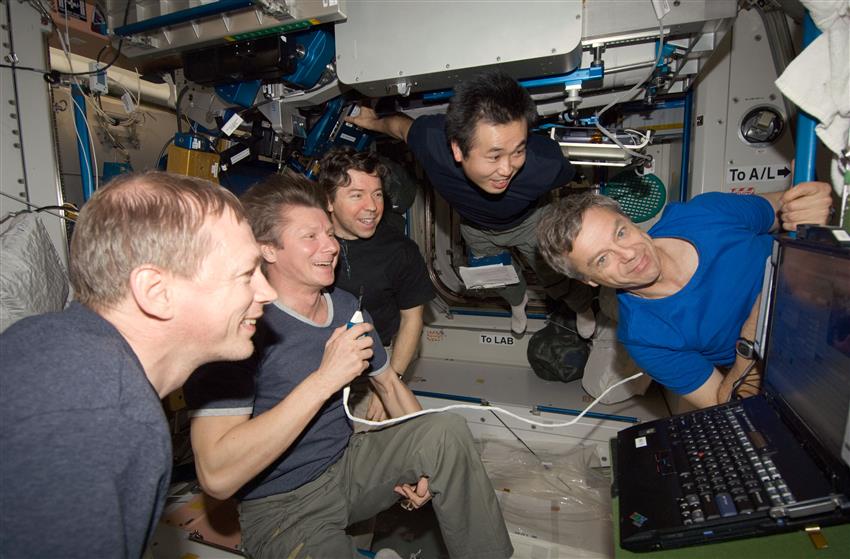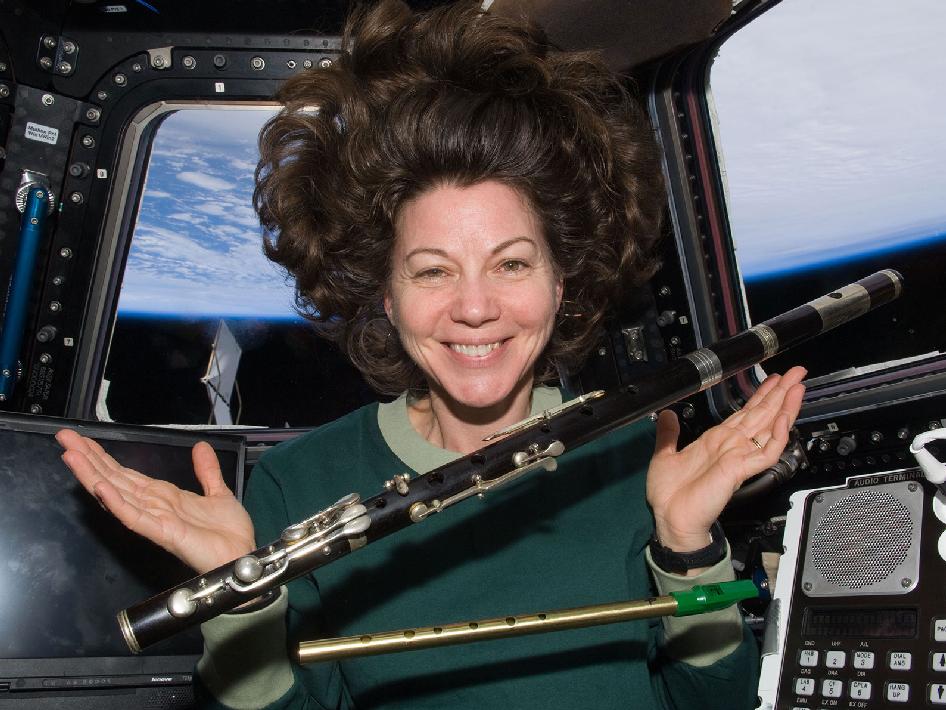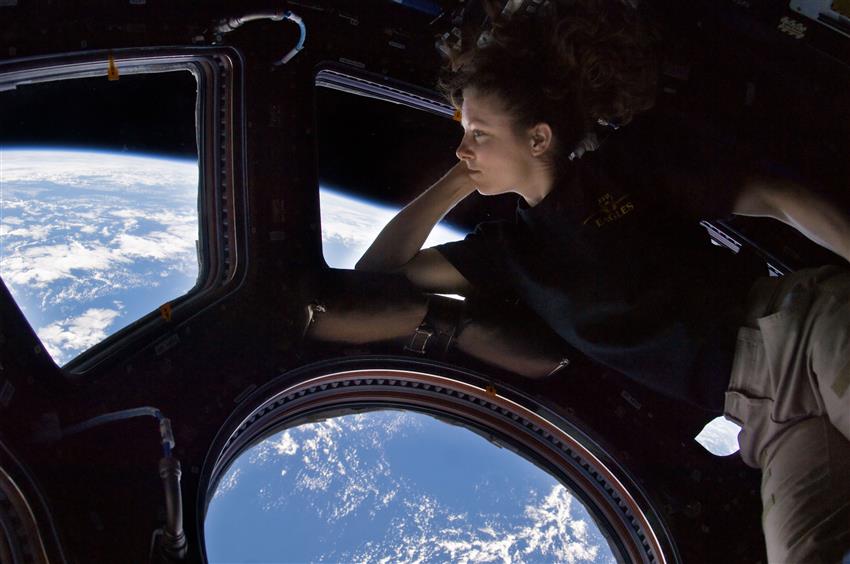Relaxing in space
A normal week in space is designed to mimic the astronauts' routine on Earth as much as possible, and consists of:
- five days of work
- two days of rest (although Saturday is also used for chores)
Thus, the astronauts have a little time to relax, and they can easily glide from one module to another in the microgravity environment. Here are some examples of popular activities aboard the International Space Station (ISS).
Admiring the "blue marble"
Many astronauts say that their favourite activity is looking out the window and admiring the Earth.
Every day the ISS orbits the Earth 16 times. Every moment offers a new perspective of the Earth's vast continents and oceans.
The astronauts can even see storms and hurricanes taking place on Earth.
Live the experience yourself by watching this magnificent video of the Earth as seen from the ISS.
Communicating with the Earth
When they have some free time, astronauts often take the opportunity to communicate with their families and friends back on Earth.
They can communicate with the Earth via:
-

email -

Internet phone -

ham radio -

videoconference
Phone call in space
Canadian Space Agency (CSA) astronaut David Saint-Jacques takes time to talk on the phone from the cupola of the ISS. (Credits: CSA, NASA)
Special delivery!
Before each mission, the families and friends of ISS crew members can put together an electronic collection of family photos, messages, video clips and reading materials that the astronauts can enjoy during their space voyage.
During their mission, the crew members periodically receive care packages as well, which contain
- sweets
- books
- magazines
- photos
- letters
The ISS has two libraries containing books, CDs and DVDs, and most of the astronauts can now upload reading material and music onto tablet devices.
Sharing the experience of space on the Web

Canadian astronaut Robert Thirsk and crew mates celebrate several events at once: Father's Day, cosmonaut Gennady Padalka's birthday, and JAXA astronaut Koichi Wakata's 100th day in orbit on board the ISS. (Credit: NASA)
In early 2010, the Internet became available on board the ISS, giving astronauts the opportunity to surf the Web in their personal time.
The signal is relayed by satellite to a mirror site at Mission Control Center in Houston. However, the connection is very slow, and access is limited to a few times a day. The connection is fairly simple and direct, and perfect for sending emails and posting messages on social media!
Social media in space
"Each astronaut has personal goals as part of their career. One of mine has been education and public awareness of what we are doing in space exploration."
Chris Hadfield helped pioneer the use of the Web to inform, educate and raise public awareness in Canada and around the world about space exploration and daily life in space.
During his last mission, Chris Hadfield was an active contributor to social media, including Facebook, Twitter, Tumblr, Reddit and SoundCloud, where he disseminated content and candidly answered questions from the public. His videos, produced by the CSA, were viewed by millions of people.
Listening to or playing music
Music allows astronauts to maintain some of the human aspects of an Earth-bound life amidst the isolation of a long-duration mission in space.

NASA astronaut Catherine Coleman brought four flutes with her to space on her latest mission! (Credit: NASA)
The challenges of playing a musical instrument in microgravity
Playing music in space is quite a challenge. The absence of gravity makes holding and performing with a musical instrument difficult.
To avoid problems, astronauts tend to hook their feet into straps or other secure parts of the Station's modules before starting to play an instrument.
Since the ISS was launched, the crew members have had access to a variety of musical instruments: flutes, keyboard, saxophone, acoustic guitar and even an Australian didgeridoo!
A cosmic recording studio
During Expedition 34/35, Canadian astronaut (and folk guitarist) Chris Hadfield spent some of his free time composing, performing and recording original songs inspired by his experiences in space.
Chris also participated in a concert live from space organized by the CSA, in collaboration with the Coalition for Music Education and Barenaked Ladies front man Ed Robertson. Nearly one million Canadians, mostly students, participated in the event by singing along with Chris.
This shows that music is truly a "universal" pleasure.
Before returning to Earth, Canadian astronaut Chris Hadfield performed I.S.S. ("Is Somebody Singing") live with nearly a million Canadians. (Credit: CSA)
Having fun with science
Just like we use the environment on Earth to have fun, astronauts use the microgravity environment for entertainment. Here are a few examples:
- Playing with drops of water or food
- Performing somersaults in microgravity
- Gliding from one module to another, like Superman
When they have time, the astronauts watch movies together. The crew also has access to a few board games, including Scrabble–the magnetic version, of course!

European Space Agency (ESA) astronaut Luca Parmitano, dressed up as Superman for Halloween, in 2013! (Credits: ESA, NASA)
These antics can be very entertaining, not only for the crew members but for anyone who might be watching via video link!
In general, weightlessness adds an element of fun to the astronauts' work day. As Julie Payette put it during Mission STS-96, "If you're not having fun, then you're not doing it right!"

